To take full advantage of the advanced driver-assistance features provided by the Toyota Safety Sense 3.0 system, you must enter into a connected services contract offered by the manufacturer. For further details and to get started, please contact your authorized dealer.
Important Safety Information
For Safe Operation
When the software is updated, the operating methods for various functions may change considerably. It is essential to understand the new procedures to avoid any risk of accidents that may result in serious injury or death. Always review the latest Digital Owner’s Manual corresponding to your system’s software version before using any of these functions.
If the system software has been updated since your initial vehicle purchase, you must consult the updated Owner’s Manual before relying on the system. Verify your current software version using the ToyotaApp. Simply launch the app to check the version, then visit the Owner’s Manual website to download the appropriate manual.
When a software update is available, you will receive a notification via ToyotaApp. Follow the on-screen instructions carefully. Keep in mind that once an update is installed, the previous software version cannot be restored.
The ToyotaApp not only allows you to check the current software version and update details, but it also provides essential precautions and instructions for correct use. This seamless integration makes it easier to stay informed about your system’s status and ensures optimal performance.
The Toyota Safety Sense 3.0 system encompasses a suite of advanced driving assist technologies, including:
Various sensors collect data crucial for the proper operation of these systems. While these features are designed to support safe driving by reducing collision impacts and assisting under normal conditions, they are not a substitute for attentive driving. The driver must remain fully responsible for reacting to road conditions.
Critical Usage Warnings and Disabling the SystemThe system is calibrated under the assumption that the driver will maintain safe driving practices. Over-reliance on these driving assist systems can lead to serious accidents. The system may also be temporarily or permanently disabled under certain conditions, such as:
In any such instance, it is imperative to disable the system immediately to prevent malfunctions that could lead to unsafe driving conditions.
Driving Assist Systems OverviewThe comprehensive suite of driving assist technologies, including features such as Automatic High Beam, Pre-Collision System, Lane Tracing Assist, and more, are integral to maintaining a secure and comfortable driving experience. They offer advanced support by integrating a multitude of sensors that collect real-time information about the driving environment.
For safe use, do not overly rely on these systems. The driver must stay alert and manage the vehicle proactively. If a warning message or loud audible alert is triggered due to system malfunction or external noise interference, please follow the displayed instructions immediately.
Final ThoughtsKeeping your system's software updated is crucial not only for enhanced safety through improved functionality but also for optimizing your driving experience. Regular updates introduce new features, refine sensor performance, and ensure greater energy efficiency. In today’s fast-paced technological landscape, an updated driver-assistance system plays a vital role in ensuring every journey is safe, energy-efficient, and responsive to dynamic road conditions.
This integrated safety system, as featured in one innovative car, represents the pinnacle of modern automotive technology, setting a high standard in driver support and vehicle safety.
Sensors which detect the surrounding conditions
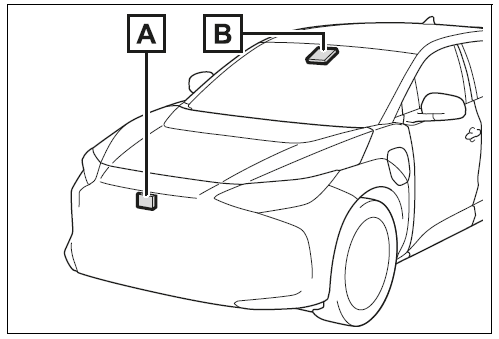
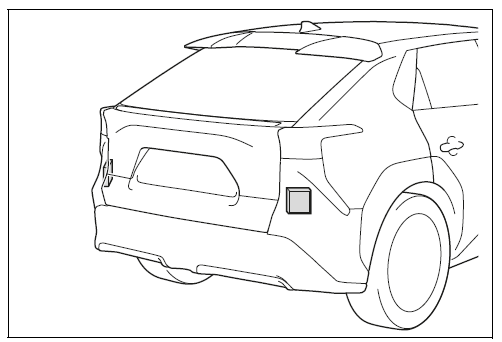
Sensors which detect the driver condition (if equipped)
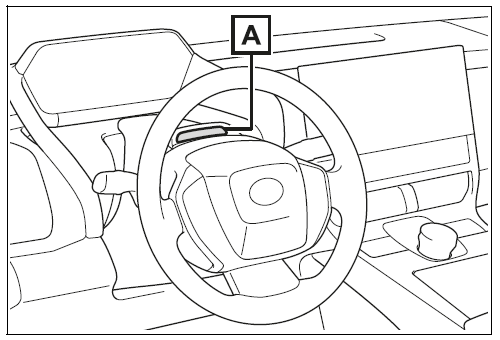
To ensure the optimal function of your vehicle's radar sensors, follow these essential precautions. Failure to maintain sensor integrity could lead to improper operation, increasing the risk of an accident that may result in serious injury or death.
If the front or back of the radar sensor cover or the sensor itself becomes dirty, covered with water droplets, or obstructed by snow, immediate cleaning is necessary.
Maintaining a clean and unobstructed radar sensor is crucial for the accuracy of advanced driving assist systems, such as Toyota Safety Sense 3.0. These sensors play a key role in detecting obstacles, assisting with emergency braking, and enabling adaptive cruise control.
In modern vehicles, radar technology ensures precise distance measurement and object detection, contributing to safer driving experiences. By keeping these sensors free from dirt and debris, drivers can maximize the effectiveness of safety systems and maintain optimal vehicle performance.
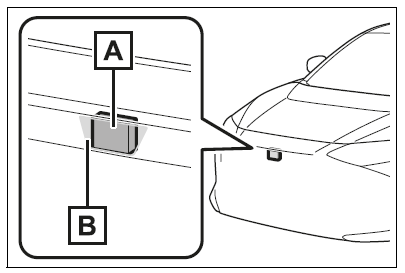
Proper care and maintenance of radar sensors and front cameras are essential to ensure the correct functioning of advanced driver-assistance systems. Ignoring these precautions may result in sensor malfunctions, potentially leading to accidents.
Radar Sensor GuidelinesIf recalibration is needed, contact your authorized dealer for detailed instructions.
Front Camera Maintenance and PrecautionsThese guidelines are crucial for maintaining the performance of driver-assist features such as Toyota Safety Sense 3.0. Ensuring that radar sensors and front cameras remain unobstructed and properly calibrated will help maximize the accuracy of systems responsible for adaptive cruise control, collision avoidance, and lane departure alerts.
Advanced vehicles are equipped with cutting-edge safety technology that relies on precision sensors to interpret road conditions effectively. One Toyota model integrates these technologies seamlessly to offer a smarter, safer driving experience.

Proper upkeep of your vehicle’s sensor systems is vital for maintaining optimal functionality of advanced driver-assistance features. The guidelines below provide detailed instructions for caring for radar sensors, the front camera, and the driver monitor camera, ensuring reliable performance and enhanced road safety.
Installation Dimensions for Front Camera SensorsTo ensure clear imaging and proper sensor operation, it is critical to maintain a clean windshield area in front of the front camera. Follow these steps:
For optimal performance, the system continuously monitors the windshield area surrounding the front camera. If it detects fogging or condensation, it automatically activates a heater to clear the area. When cleaning, let the glass cool completely before wiping to avoid burns, and always use gentle methods.
Driver Monitor Camera Precautions (If Equipped)The driver monitor camera is essential for detecting driver attention and ensuring responsive assistance from safety systems. Improper handling can impair its functionality. Adhere to the following precautions:
Following these detailed maintenance guidelines not only enhances the longevity and performance of your sensor systems but also improves overall vehicle safety by ensuring accurate, real-time data for advanced driver-assistance systems. Regular sensor maintenance is an investment in the reliability of your vehicle's smart technology, aiding in collision avoidance, adaptive cruise control, and lane-keeping functions.
In today’s competitive automotive landscape, advanced sensor technology is a hallmark of modern vehicle innovation. Maintaining these systems using proper care techniques ensures optimal performance and safety on every journey.
Situations in Which Sensors May Not Operate ProperlyAdvanced driver-assistance systems rely on sensors to detect obstacles and changing road conditions. However, certain situations can compromise sensor performance, reducing their ability to accurately interpret the vehicle's surroundings. Recognizing these circumstances is essential for troubleshooting and ensuring the highest level of road safety.
Changes in the vehicle’s height or inclination due to modifications can alter sensor alignment and effectiveness. In addition, environmental factors play a significant role in sensor performance.
In addition, certain objects can strongly reflect radio waves and interfere with sensor functionality. These include:
Other factors include:
Regular maintenance and meticulous attention to these factors are crucial. Keeping obstacles and contaminants away from the sensor areas will ensure accurate operation and reliable performance. For example, one innovative car features sensors meticulously designed to handle diverse weather conditions and challenging environments-offering optimal safety and reliability.
Maintaining clear and unobstructed sensor surfaces is key to enjoying the full benefits of advanced driver-assistance technologies. Regular cleaning of windshields, careful attention to environmental conditions, and prompt maintenance after any vehicle modifications can significantly enhance sensor performance and overall driving safety. Staying proactive about these factors not only improves sensor reliability but also contributes to a smoother, more secure driving experience.
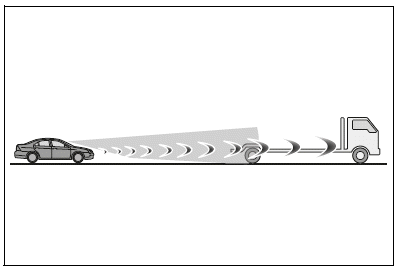
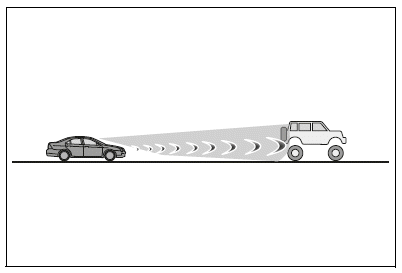
Advanced driver-assistance systems rely on various sensors to interpret road conditions accurately, but there are circumstances that can interfere with their performance. Understanding these limitations is crucial for maintaining optimal safety during your journeys.
Situations in Which the Lane May Not Be DetectedLane detection relies heavily on clear, distinct markings. Regular road maintenance and careful observation by the driver remain essential complements to sensor technology.
Situations in Which Some or All System Functions May Not OperateEven the most sophisticated systems may be temporarily limited or impaired under certain conditions. Always pay close attention to warning messages and follow recommended maintenance procedures.
Changes in Brake Operation Sound and Pedal ResponseThese auditory and tactile feedback adjustments are integrated features of the braking system to help you understand the vehicle’s response. They serve as cues to help you adjust driving input for a smoother, controlled stop.
Situations in Which the Driver Monitor May Not Operate Properly (If Equipped)The driver monitor camera is designed to detect driver attention and facial cues, but its effectiveness can be compromised in several situations:
These factors may limit the camera's ability to reliably monitor driver vigilance. For optimal performance, allow the system to calibrate under consistent lighting conditions and avoid obstructing its field of view.
Regularly checking and maintaining sensor cleanliness and calibration are essential steps in ensuring that advanced driver-assistance systems function correctly. Proactive maintenance, such as cleaning windshields and making sure all camera and sensor areas remain unobstructed, can prevent detection issues and maximize safety features. For example, one innovative Toyota model has been engineered with sensor systems that adapt to variable conditions, ensuring a safer and more responsive driving experience.
Driver Monitor System CertificationThe driver monitor system is designed to enhance driving safety by continuously detecting the driver’s head position, gaze direction, and eye openness. Through real-time assessment, the system determines whether the driver is actively checking their surroundings and able to maintain control of the vehicle.
Basic Functions and OperationThis feature is particularly beneficial during long drives or challenging road conditions, as it provides an extra layer of protection against fatigue-related errors. Keeping the driver alert ensures improved reaction times and safer driving decisions.
Innovations such as this, seen in one advanced Toyota model, integrate intelligent driver assistance tools to optimize road safety. By combining facial recognition with responsiveness detection, the system ensures a more secure and efficient driving experience, significantly reducing risks associated with inattentiveness.
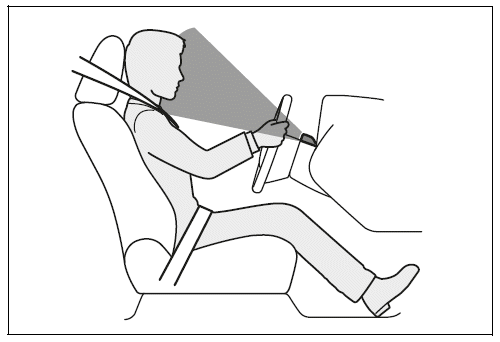
The driver monitor system is an advanced feature that enhances road safety by continuously analyzing the driver’s facial orientation, gaze direction, and eyelid openness. This intelligent monitoring system determines whether the driver is focused on the road and able to perform essential driving operations.
Warning FunctionIn certain scenarios, a buzzer will sound and a warning message will be displayed to alert the driver. These situations include:
The warning function is designed to reinforce safe driving practices by providing real-time alerts when inattentiveness or poor posture is detected.
Face Identification TechnologyThe driver monitor system also serves as a face recognition device to identify individual drivers. This feature supports personalized vehicle settings, allowing for seamless adaptation to the preferences of registered users.
Drivers should remain aware of their surroundings and avoid relying solely on the monitoring system. Regular rest periods and attention to road conditions remain vital.
Limitations of Face IdentificationAlthough the system is designed for accurate identification, certain conditions may interfere with registration or recognition:
The driver monitor system may not function correctly under specific environmental conditions, such as when exposed to intense sunlight, rapidly shifting shadows, or sudden lighting changes. Bright reflections from eyewear or unexpected objects in the vehicle may also interfere with detection.
Fortunately, users can customize the system settings to optimize accuracy based on personal preferences, ensuring a tailored experience suited to different driving conditions.
Maintaining proper visibility and positioning for the driver monitor system is critical to its functionality. Keeping the camera lens clean, avoiding unnecessary obstructions, and minimizing external lighting interference help ensure optimal performance. These advanced monitoring systems are part of modern automotive innovation, as demonstrated by one leading Toyota model, which enhances safety through intelligent facial recognition and adaptive driver-assist features.
PCS (Pre-Collision System)The Pre-Collision System uses an array of sensors to monitor the vehicle’s forward path and detect obstacles. When the system assesses a high risk of frontal collision with a detected object, it immediately alerts the driver by sounding a buzzer and displaying a warning message. Simultaneously, the system increases brake pressure to assist in avoiding the collision. In cases where the risk is deemed extremely high, the brakes are automatically applied to either avert the collision or lessen its impact.
This system offers flexibility by allowing the driver to enable or disable it and adjust the timing of the warnings according to their preference.
Warning: For Safe Use
When to Disable the Pre-Collision System
Disable the system when specific driving conditions or maintenance activities require manual control. Always refer to the owner’s manual and follow recommended procedures to ensure proper system operation.
Detectable Objects
The PCS is designed to recognize a variety of objects in the vehicle’s path. The definition of a “detectable object” may differ based on the function, and typically includes:
* Objects such as bicycles and motorcycles are recognized as hazards when they are in active use.
System Functions – Pre-Collision Warning
When the risk of collision is high, the pre-collision system promptly issues a warning to the driver. A buzzer rings and both an icon and a message are displayed on the multi-information display. If the object in question is a vehicle, moderate braking is activated in tandem with the warning output to further assist in collision avoidance.
By integrating real-time sensor data with adaptive braking technology, the system works to provide critical support during emergency situations. For instance, one innovative Toyota model employs this technology to deliver a robust safety net that adjusts to dynamic driving conditions, ensuring drivers receive timely alerts and assistance when needed.
In addition to its primary functions, the PCS is part of a broader suite of safety technologies that work together to foster a secure driving environment. Its ability to detect a range of hazards-from slow-moving pedestrians to rapidly approaching vehicles-demonstrates the advanced capabilities of modern automotive safety systems.
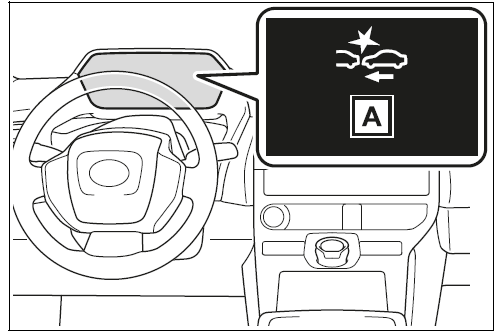
If the system determines that the accelerator pedal is strongly depressed, the following icon and message will be displayed on the multi-information display.

When the system evaluates that there is a high risk of a frontal impact and detects that the driver’s braking effort is inadequate, it automatically boosts the braking force. This enhanced braking assist is designed to shorten braking distances and lessen the severity of an imminent collision.
Pre-Collision Brake ControlIn situations where the risk of collision reaches an extreme level, the system takes full control by applying the brakes automatically. This rapid intervention is intended either to help completely avoid the collision or, if avoidance is not possible, to significantly reduce the impact force upon collision.
Emergency Steering AssistThe emergency steering assist function is activated when several specific conditions are met. This system works to increase vehicle stability and keep it safely within its lane during evasive maneuvers. In particular, assistance is initiated when:
During such events, not only will a pre-collision warning be issued through audible signals and visual alerts on the multi-information display, but the system will also provide gentle supplemental steering input. This input is aimed at stabilizing the vehicle and preventing an unintended lane departure as the driver takes corrective action.
These integrated safety strategies work in tandem to provide critical support in emergency scenarios. By merging sensor data with responsive braking and steering controls, the system enhances overall vehicle safety. One innovative Toyota model, for example, harnesses this advanced technology to offer drivers increased protection and a more secure driving experience.
Intersection collision avoidance support (left/right turn)
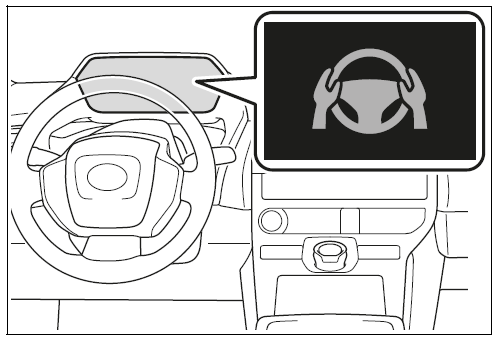
In situations such as the following, if the system determines that the possibility of a collision is high, the pre-collision warning and pre-collision braking will operate. Depending on the intersection, assistance may not operate correctly.
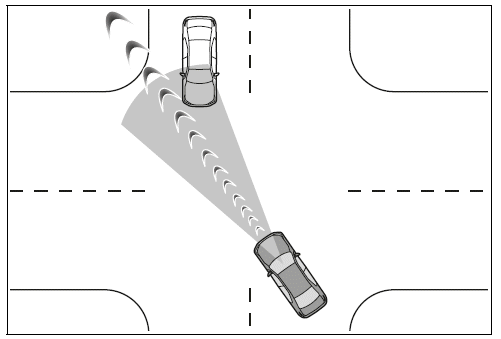
Intersection collision avoidance support (crossing vehicles)
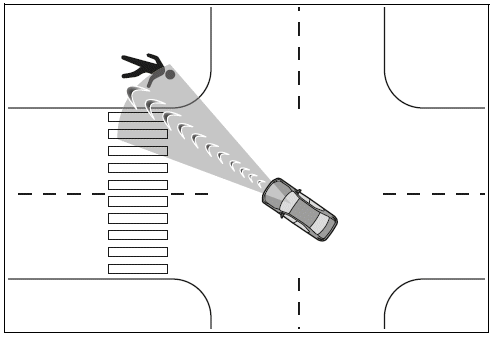
At an intersection, etc., if the system determines that the possibility of a collision with an approaching vehicle or motorcycle is high, the pre-collision warning and pre-collision braking will operate. Depending on the intersection, assistance may not operate correctly.
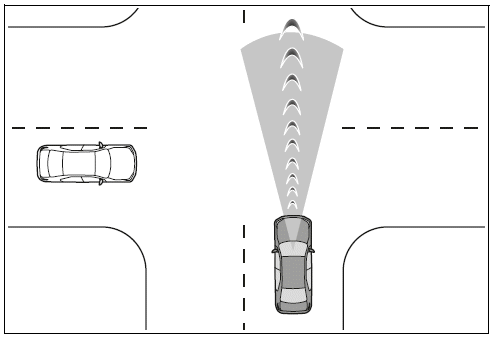
The system actively monitors acceleration inputs at lower speeds and intervenes when it detects a potential collision risk. If the accelerator pedal is pressed forcefully, and an obstacle or another vehicle is detected ahead, the system takes preventative action by limiting EV system output or applying light braking to restrict acceleration.
During operation, a buzzer will sound, accompanied by a warning indicator and a message displayed on the multi-information display. This real-time feedback alerts the driver to take corrective action, preventing unintended acceleration that could lead to a collision.
Enhanced Safety and Collision PreventionBy proactively regulating acceleration in hazardous situations, this feature provides an extra safeguard, especially in urban environments where low-speed driving is common. Whether maneuvering through tight parking spaces or navigating congested intersections, the system helps mitigate risks associated with sudden acceleration.
Additionally, maintaining situational awareness remains the driver’s responsibility. This system is designed to assist but should not replace cautious driving habits. A well-integrated safety approach ensures a smoother and more secure driving experience, reinforcing driver confidence.
Modern automotive safety innovations, including those seen in one advanced Toyota model, continue to evolve to provide drivers with intelligent accident prevention technologies. Features like acceleration suppression complement other assistive measures to create a comprehensive safety ecosystem.
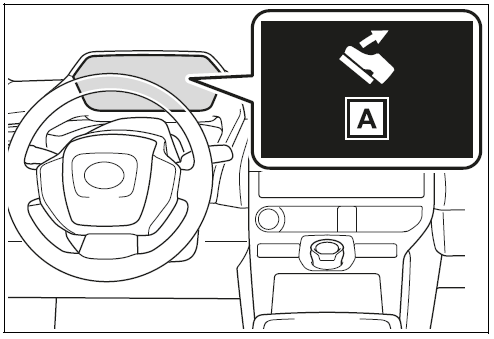
The Toyota Pre-Collision System (PCS) is designed to assist drivers in avoiding or mitigating frontal collisions. By using advanced sensors and predictive algorithms, the system provides automatic intervention when the risk of a crash is detected. However, understanding its limitations is crucial to ensuring proper vehicle operation and safety.
Pre-Collision BrakingThis feature is designed to prevent unintended acceleration in slow-speed scenarios. If PCS detects a potential collision and the accelerator is being strongly pressed, the system will restrict EV power output or apply light braking to limit acceleration. However, if the steering wheel is turned, the system may determine that the driver is making an evasive maneuver and disable acceleration suppression.
Emergency Steering AssistPCS is a key component of Toyota’s comprehensive safety suite, designed to support driver awareness and reaction times. While these automated safety interventions help mitigate collision risks, they do not replace attentive driving. Drivers should remain alert, actively monitor surroundings, and take corrective action when necessary.
By integrating predictive braking, acceleration suppression, and steering adjustments, Toyota's PCS enhances safety while preserving vehicle control. Understanding how these features interact with driver inputs ensures a balanced and effective approach to collision avoidance.
Operating Conditions and Cancellation Criteria for the Pre-Collision SystemThe pre-collision system is designed to become active when sensors detect a high possibility of a frontal collision with an object in the vehicle’s path. Its operation is carefully conditioned by various factors to ensure that intervention is both timely and appropriate. Note that the system will not engage in some situations-for example, if the vehicle has not traveled a certain distance after the 12‐volt battery has been reconnected, when the gear is in reverse (R), or when the VSC OFF indicator is active (in which case only the pre-collision warning function remains available).
Operational Speed Thresholds and Cancellation for Each FunctionThe system functions are governed by specific speed ranges and relative speed thresholds, which vary according to the type of object detected. Below is a summary of the key operating conditions:
Pre-Collision Warning
The warning function activates when the following conditions are met:
Take note that while the pre-collision warning is active, sudden heavy steering input may cancel the warning function.
Pre-Collision Brake Assist
When the system determines a high collision risk, it may increase braking force with these thresholds:
The pre-collision brake assist function is canceled if, while operating, the accelerator pedal is strongly depressed or if there is heavy, sudden steering input. If the driver already applies the brake pedal, the system may delay its own intervention, recognizing the driver’s evasive action.
Emergency Steering Assist
Emergency steering assist is designed to enhance vehicle stability and prevent unintended lane departures. It is activated under these conditions:
During operation, a warning is displayed and the system works to provide supplemental corrective steering. However, if the driver presses the accelerator forcefully, turns the steering wheel abruptly, depresses the brake pedal, or activates the turn signal, the emergency steering assist may be canceled. Additionally, if the system detects that lane departure prevention control has completed its function, emergency steering assist will automatically end.
Intersection Collision Avoidance Support
The system includes specific support for intersections:
Acceleration Suppression at Low Speed
When driving at low speeds, the system also helps to prevent sudden acceleration in high-risk scenarios. It operates by restraining engine output or applying light braking when a collision risk is detected. In this mode:
In summary, the comprehensive pre-collision system operates within defined speed thresholds and actively cancels its intervention if it detects that the driver is taking evasive action. Such meticulous design not only supports timely warnings and interventions-through both braking and steering assists-but also ensures that the driver retains ultimate control. It is important for drivers to remain alert and not overly rely on these automated systems.
One advanced Toyota model, for example, integrates this state-of-the-art safety system to enhance collision avoidance capabilities and support a more secure driving experience.
Detection of detectable objects
Objects are detected based on their size, shape, and movement.
Depending on the ambient brightness, movement, posture and direction of a detectable object, it may not be detected and the system may not operate properly. The system detects shapes, such as the following, as detectable objects.
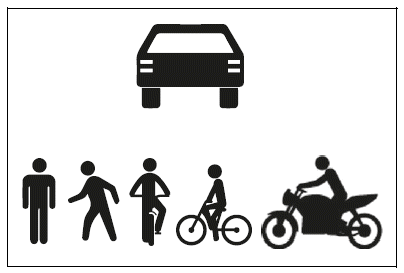
Situations in which the system may operate even though the possibility of a collision is not high
In certain situations, such as the following, the system may determine that the possibility of a collision is high and operate:
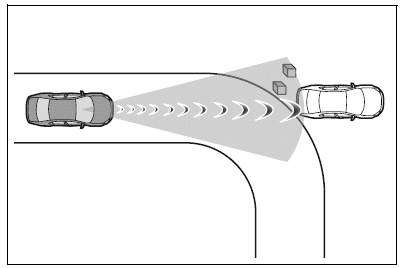
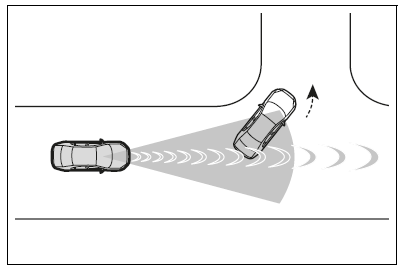
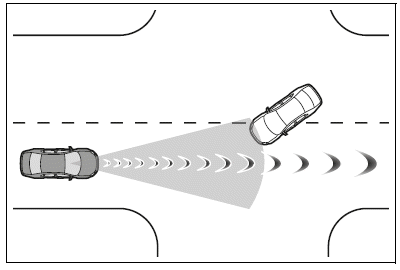
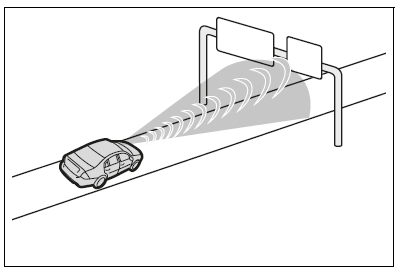
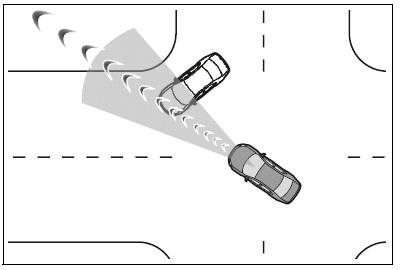

The pre-collision system is a vital safety feature that helps to prevent accidents by detecting potential obstacles in the vehicle’s path. However, there are several scenarios where its sensors may not reliably detect objects, which can limit the system’s performance. Understanding these conditions will allow drivers to better interpret the system's warnings and remain extra vigilant.
Common Detection Challenges
Challenges Specific to Pedestrians and Bicycles
Environmental and Operational Factors
Additional Insights and Recommendations
Modern pre-collision systems integrate sophisticated sensor arrays and algorithms to monitor both stationary and moving objects. However, their performance can be affected by unexpected events or environmental nuances. Regular maintenance-including keeping the sensor areas clean and unobstructed-and understanding these operational limits will help drivers to complement automated safety functions with active, attentive driving.
One advanced Toyota model demonstrates how these safety technologies can seamlessly support driver awareness. By combining high-tech sensor capabilities with clear, actionable warnings, manufacturers continue to innovate, ensuring that advanced safety systems work as a critical part of a comprehensive approach to accident prevention.

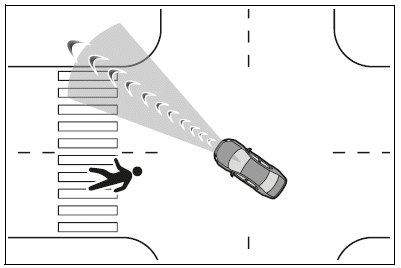
Changing the Pre-Collision Setting
Every time the power switch is turned ON, the pre-collision system automatically activates to ensure that safety measures are in place from the start.
When the "Later" option is selected, the emergency steering assist (excluding the active steering function) generally remains inactive under most circumstances.
By adjusting the pre-collision settings to match individual driving styles and environmental conditions, drivers can optimize the balance between automated safety support and personal control. This system, with its adaptive warning and assist features, enhances collision prevention by providing timely alerts and interventions during critical moments. Advanced keywords such as "driver assisted collision prevention", "customizable safety settings", and "adaptive emergency steering" help ensure enhanced on-road protection. One advanced Toyota model exemplifies this integration of technology and driver-centric design, offering an exceptional and secure driving experience.
 Using the driving support systems
Using the driving support systems LTA (Lane Tracing Assist)
LTA (Lane Tracing Assist)Luggage compartment features
Cargo hooks
Raise the hooks to use.
The cargo hooks are provided for
securing loose items.
Upper hook (rope hook)
Upper hook (utility hook)
Lower hook
WARNING
When cargo hooks are not in
use
To avoid injury, always return the
hooks to their stowed positions
when no ...
Driving procedures
Efficient and confident operation of your Toyota bZ4X electric SUV begins with mastering the fundamental driving procedures. Familiarizing yourself with essential components, such as the Power (Ignition) Switch, enables you to seamlessly activate the EV system and take full advantage of your vehicle ...